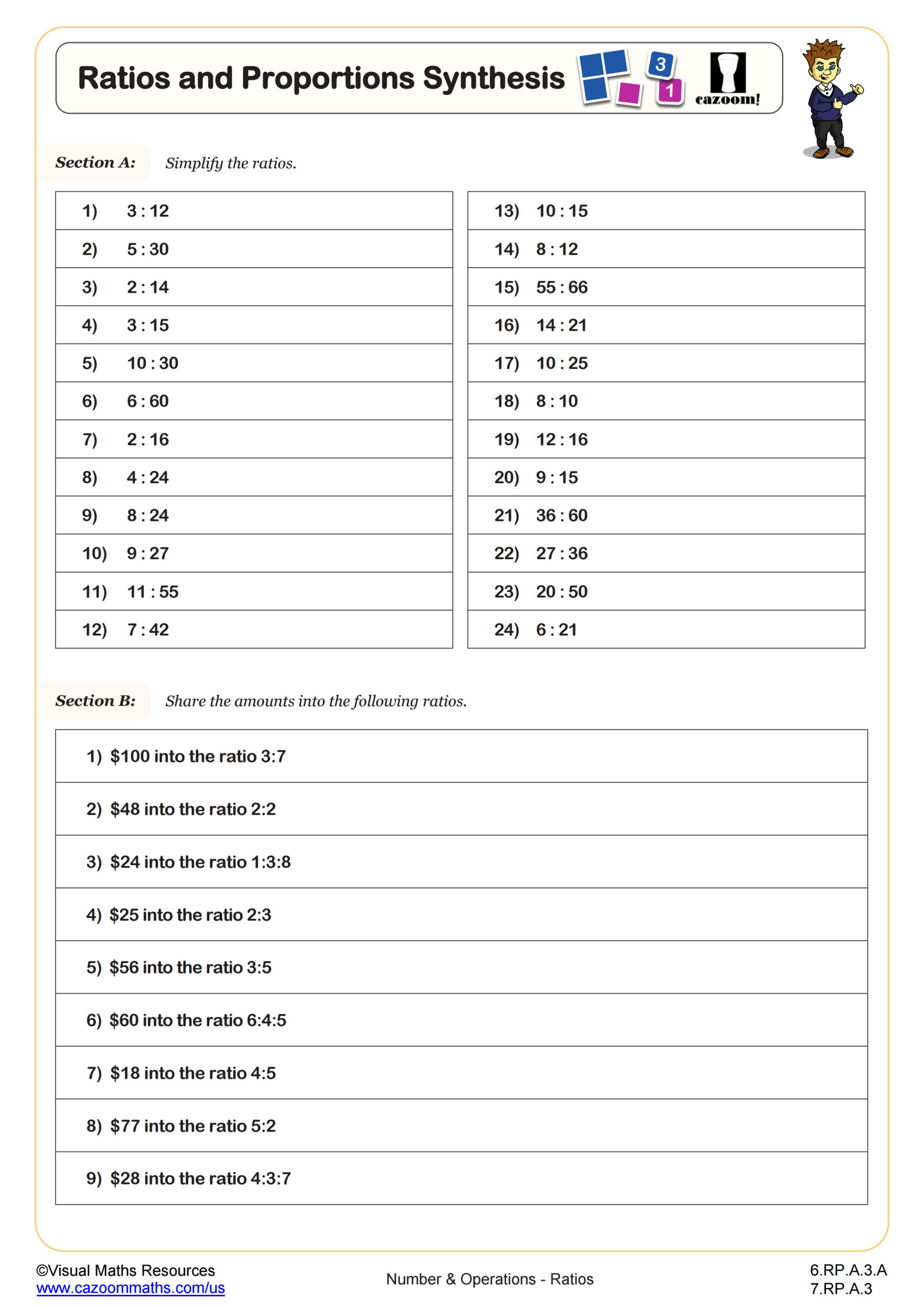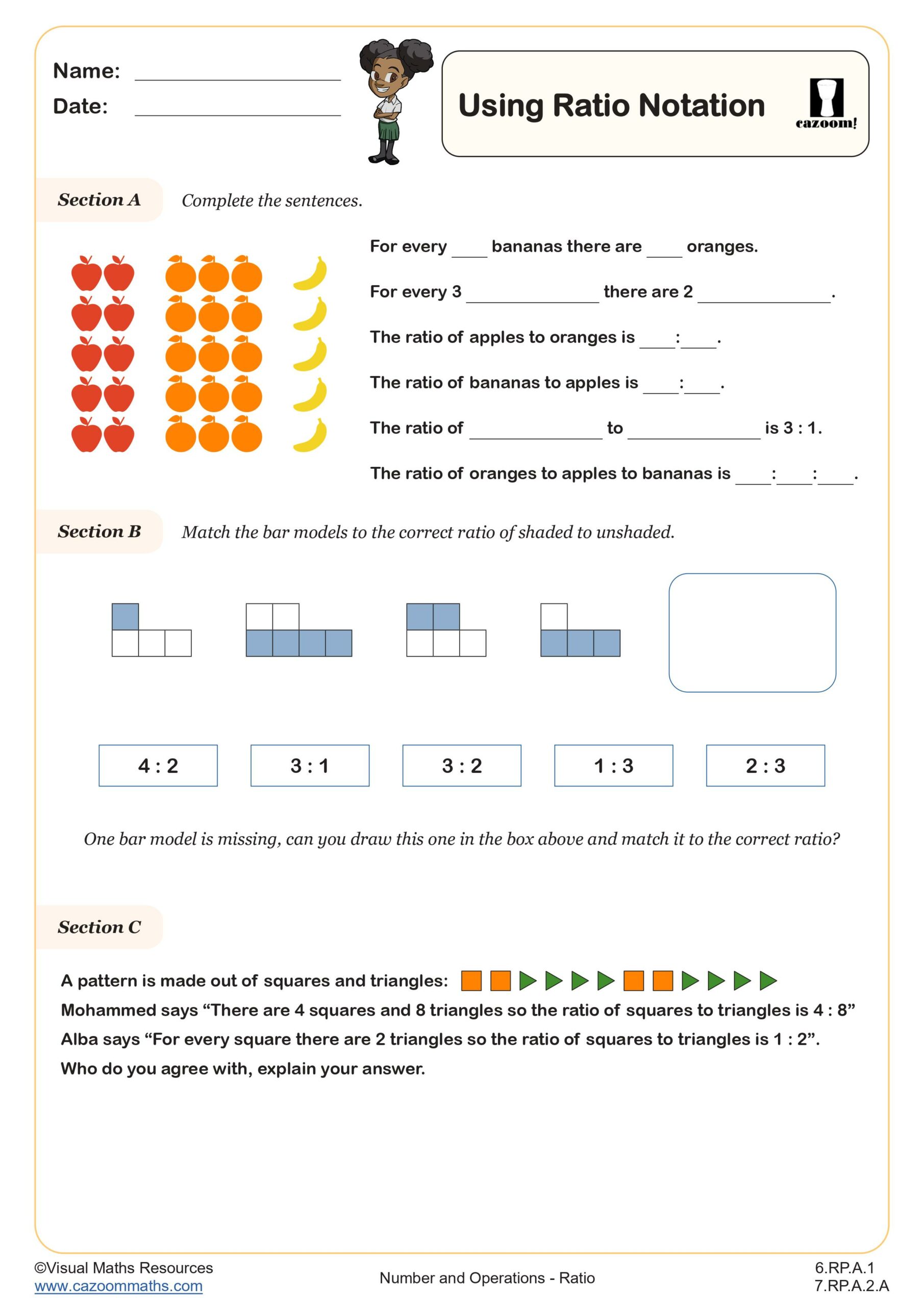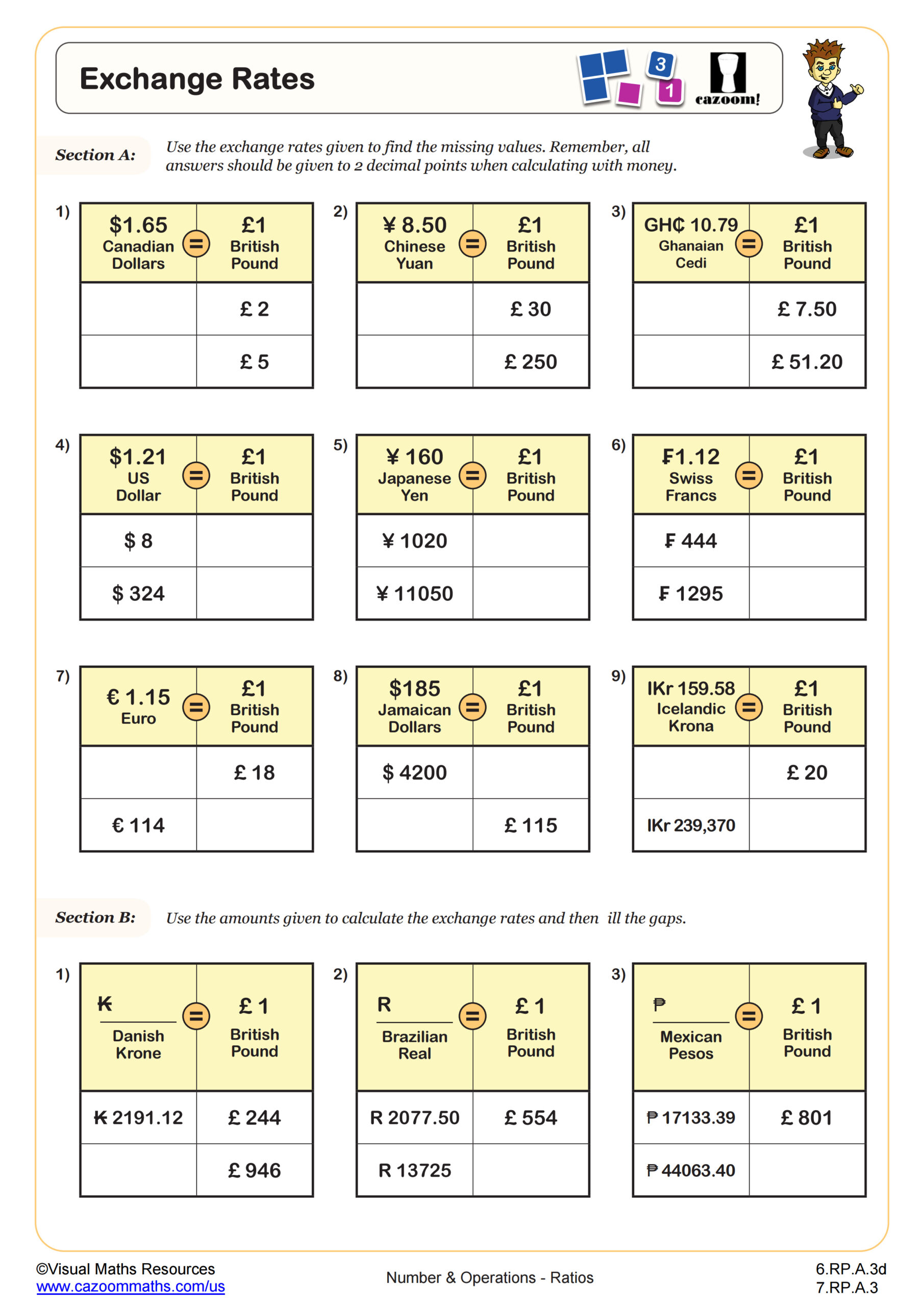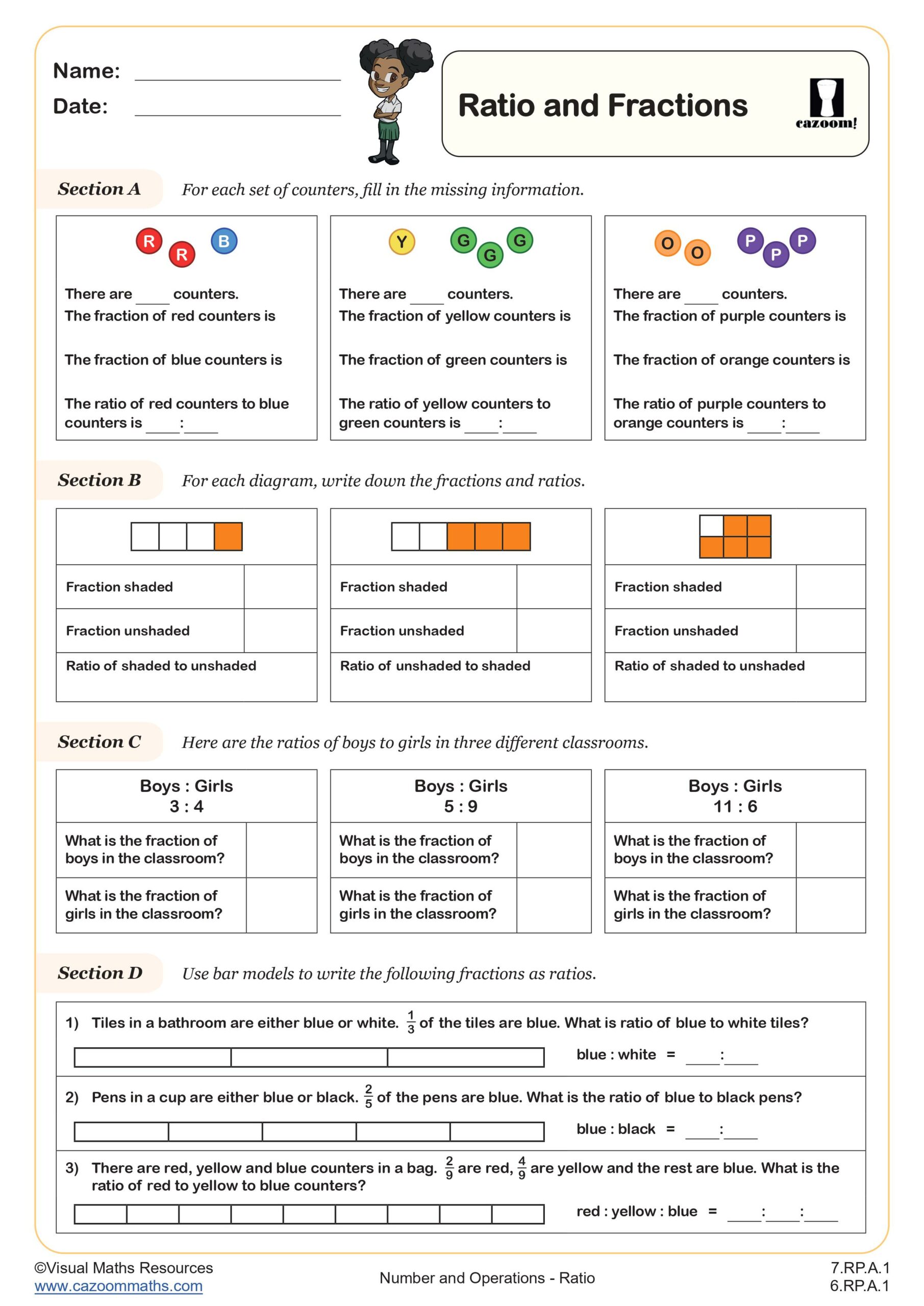Back to:
Ratios 1:n and n:1 WORKSHEET
Suitable for Grades: 6th Grade, 7th Grade
CCSS: 6.RP.A.2, 7.RP.A.2
CCSS Description: Understand the concept of a unit rate a/b associated with a ratio a:b with b ≠ 0, and use rate language in the context of a ratio relationship. For example, “This recipe has a ratio of 3 cups of flour to 4 cups of sugar, so there is 3/4 cup of flour for each cup of sugar.” “We paid $75 for 15 hamburgers, which is a rate of $5 per hamburger.
Recognize and represent proportional relationships between quantities. a. Decide whether two quantities are in a proportional relationship, e.g., by testing for equivalent ratios in a table or graphing on a coordinate plane and observing whether the graph is a straight line through the origin. b. Identify the constant of proportionality (unit rate) in tables, graphs, equations, diagrams, and verbal descriptions of proportional relationships. c. Represent proportional relationships by equations. For example, if total cost t is proportional to the number n of items purchased at a constant price p, the relationship between the total cost and the number of items can be expressed as t = pn. d. Explain what a point (x, y) on the graph of a proportional relationship means in terms of the situation, with special attention to the points (0, 0) and (1, r) where r is the unit rate.
Recognize and represent proportional relationships between quantities. a. Decide whether two quantities are in a proportional relationship, e.g., by testing for equivalent ratios in a table or graphing on a coordinate plane and observing whether the graph is a straight line through the origin. b. Identify the constant of proportionality (unit rate) in tables, graphs, equations, diagrams, and verbal descriptions of proportional relationships. c. Represent proportional relationships by equations. For example, if total cost t is proportional to the number n of items purchased at a constant price p, the relationship between the total cost and the number of items can be expressed as t = pn. d. Explain what a point (x, y) on the graph of a proportional relationship means in terms of the situation, with special attention to the points (0, 0) and (1, r) where r is the unit rate.
Ratios 1:n and n:1 WORKSHEET DESCRIPTION
This worksheet allows learners to practise converting ratios to the form 1:n and n:1 as well as solve problems. Sections A and B ask for some ratios in the form a:b to be written in the form 1:n and n:1. Section C then asks for ratios to be simplified. Section D then links the rates by requiring some in the form 1:n to be converted to n:1. Section E then brings in the link with map scales and different units. Section F ends the worksheet with some problems that lend themselves to being solved via a unitary method.
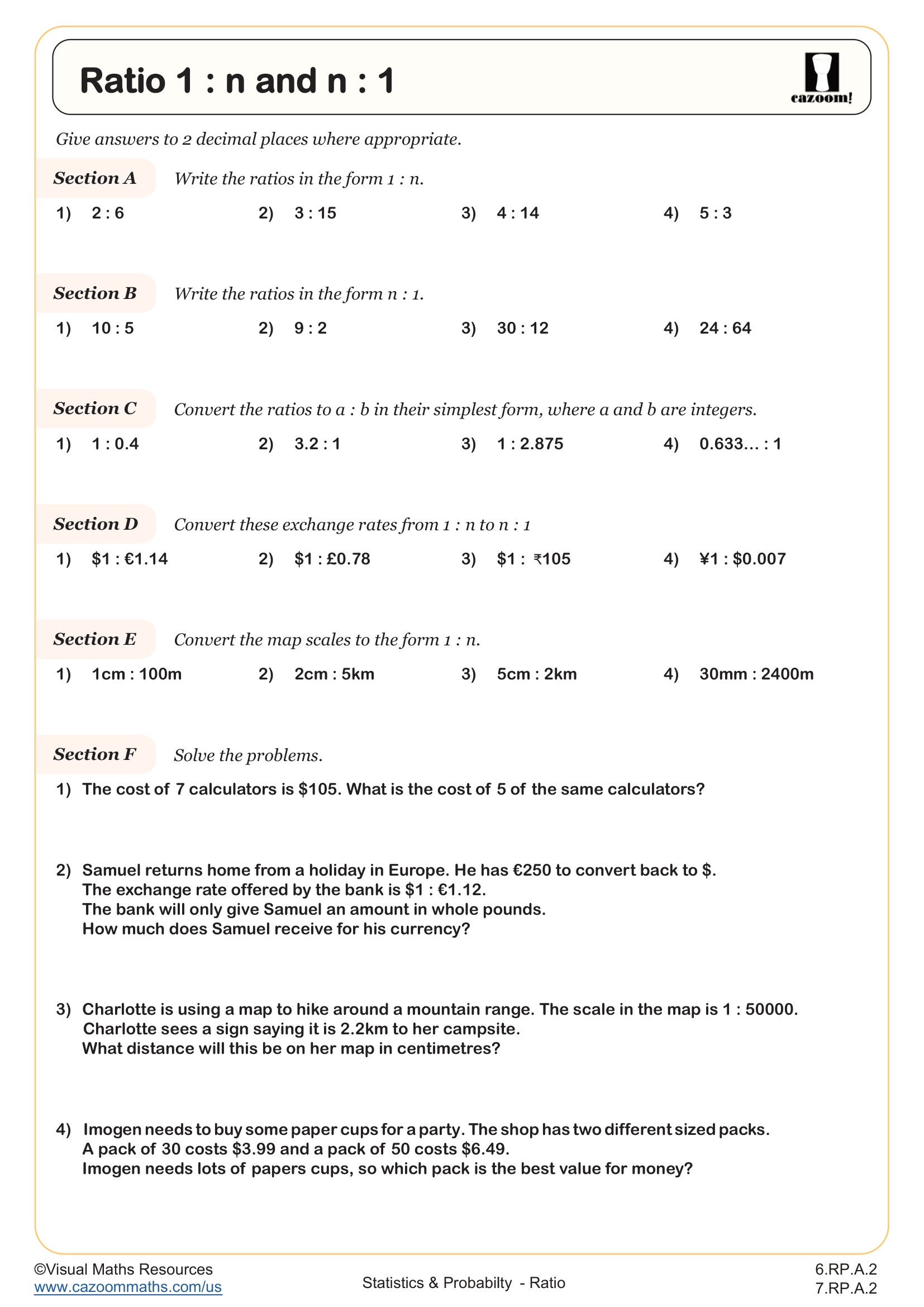
RELATED TO Ratios 1:n and n:1 WORKSHEET
Frequently Asked Questions
This ratios 1:n and n:1 worksheet is designed for students in 6th Grade and 7th Grade and aligns with Common Core State Standards.
